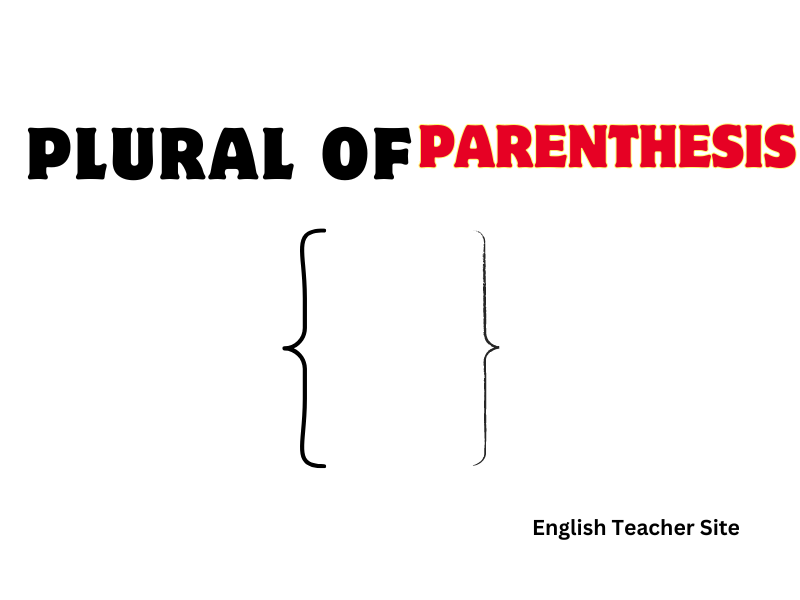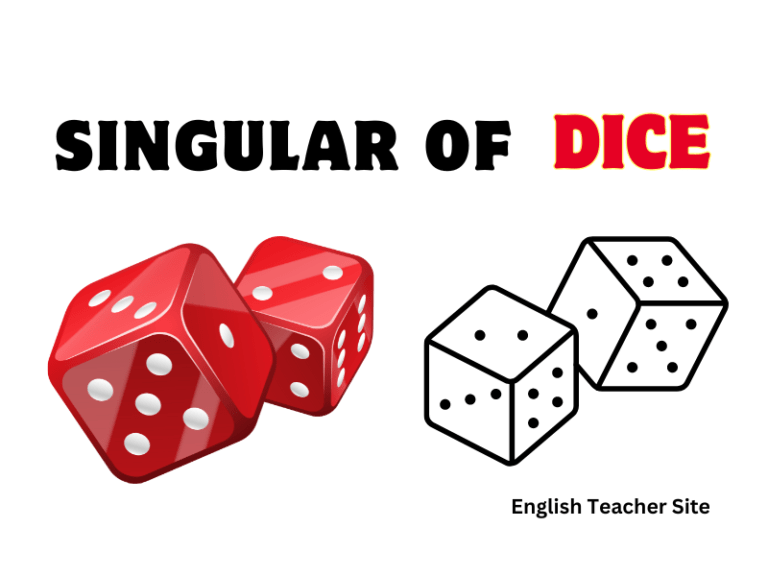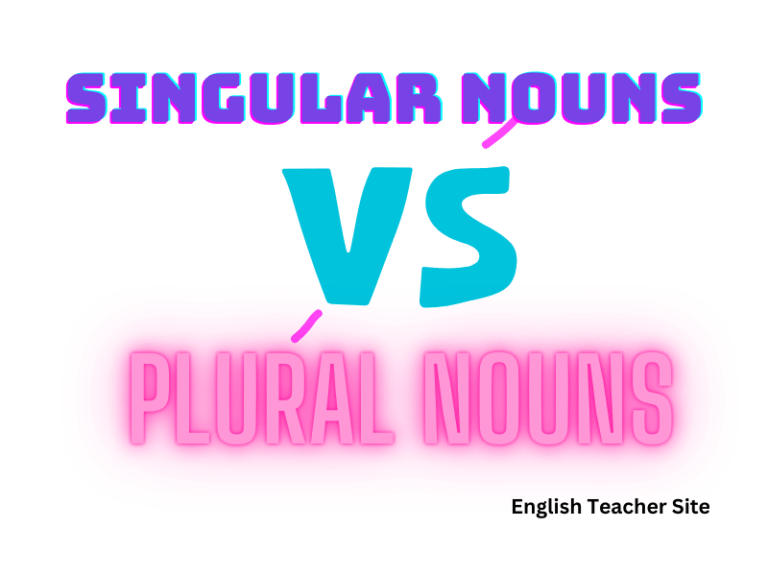What’s the Plural of Parenthesis: Understanding English Grammar

- The singular form “parenthesis” becomes “parentheses” in plural.
- Parentheses are used to provide supplementary information in a sentence.
- Recognizing the difference between singular and plural forms is essential for clarity in writing.
“Parentheses” are used in English as a form of punctuation, typically to include additional information that is supplementary to the main sentence. Additionally, the term also refers to the symbols themselves, commonly known as round brackets. Understanding when to use “parenthesis” in the singular and “parentheses” in the plural is fundamental for clear written communication.
What’s the Plural of “Parenthesis”?
The term parenthesis refers to the singular form of a punctuation mark used to enclose additional information within a sentence. When dealing with more than one of these punctuation marks, the term transforms into its plural form, parentheses.
| Singular | Plural |
|---|---|
| parenthesis | parentheses |
The shift from the singular “parenthesis” to the plural “parentheses” is a matter of altering the end of the word rather than just adding an “s,” which exemplifies an irregular plural form in English. The change from “thesis” to “theses” or “crisis” to “crises” follows a similar pattern, indicating its roots in the Greek language.
- Singular usage: A parenthesis is often used to include information that is supplementary to the main point.
- Plural usage: The document contains several sets of parentheses to elaborate on key terms.
| Usage | Example Sentence |
|---|---|
| Singular (parenthesis) | Please insert a parenthesis at the end of the sentence. |
| Plural (parentheses) | Parentheses are common in academic writing. |
Is “Parenthesis” Singular or Plural?
Singular: The singular form is “parenthesis.”
- Example: A single parenthesis was used to add clarification to the sentence.
Plural: The plural form is “parentheses.”
- Example: Several parentheses can be found throughout the document to provide further details.
| Number | Form |
|---|---|
| Singular | Parenthesis |
| Plural | Parentheses |
When working with punctuation, the symbols “(” and “)” are also called parentheses, and they are used in pairs to show the beginning and end of the information added into the text. Below is a representation of their usage:
| Punctuation | Usage |
|---|---|
| ( | Indicates the start of the added text. |
| ) | Indicates the end of the added text. |
To summarize:
- A parenthesis is a singular term denoting an element inserted into a sentence.
- Parentheses refer to both the plural form of parenthesis and the pair of punctuations used in writing.
For proper punctuation, adhere to the following rules:
- Opening Parenthesis: Always use before the additional information.
- Closing Parenthesis: Always use after the additional information is complete.
Defining the Word “Parenthesis/Parentheses”
A parenthesis is:
- A punctuation mark often used in pairs within text.
- Utilized to clarify meaning or to insert supplementary information.
Here is a simple illustration of how a parenthesis might be used in a sentence:
- Andy, who was late (as usual), managed to catch the bus.
In contrast, parentheses denote the plural form and refer to both of the curved punctuation marks encasing the interjected information. The transition from singular to plural in this case is irregular, which is highlighted through the examples below:
| Singular | Plural |
|---|---|
| parenthesis | parentheses |
The function of parentheses extends beyond literature and finds its utility in mathematics, where they govern the order of operations, and in programming, where they delineate function arguments and expressions.
Correct Usage:
- Singular: The writer inserted a parenthesis to provide extra detail.
- Plural: The editor removed extraneous parentheses that cluttered the text.
What’s the Plural of “Parenthesis”?
Correct Usage in a Sentence:
- Singular: Please add the information in a parenthesis.
- Plural: Enclose the list in parentheses.
| Singular | Plural |
|---|---|
| parenthesis | parentheses |
The term parentheses not only refers to a pair of punctuation marks but can also denote the information within the marks.
Examples of Parentheses in Sentences:
- The report included several clarifications (which were marked like this).
- He mentioned that the car was available in many colors (blue, red, green, and black).
| Form | Example |
|---|---|
| Singular | Use a parenthesis here. |
| Plural | Place the items in parentheses. |
Nouns That End in -sis/-ses
Examples include:
| Singular Form | Plural Form |
|---|---|
| Thesis | Theses |
| Crisis | Crises |
| Analysis | Analyses |
| Basis | Bases |
- Words like diagnosis become diagnoses.
- The word parenthesis turns into parentheses, despite some misconceptions about plural forms involving the addition of “es” to words ending in “s”.
Moreover, these plural forms are essential for correct subject-verb agreement, ensuring clear and precise communication.
Considerations:
- The shift from -sis to -ses is not optional but a grammatical necessity.
- The singular form always ends in -sis, while the plural form ends in -ses, showing the distinct transition between the two.
Examples of the Word “Parenthesis” Used in Context
Single Parenthesis in a Sentence
In this table, we illustrate the use of a single parenthesis within a sentence.
| Sentence with Parenthesis | Explanation |
|---|---|
| She finally arrived at the conclusion (after many hours of deliberation). | The parenthesis provides extra detail. |
| Mark your response with a check (✓) next to the correct answer. | The parenthesis clarifies the symbol to use. |
Multiple Parentheses in a Document
This table showcases different sentences using “parentheses” to indicate additional information.
| Sentences with Parentheses |
|---|
| In the list of ingredients, you’ll need: flour (whole wheat), sugar (preferably organic), and milk (2% fat). |
| The file contained detailed records (sales figures, customer feedback, and inventory lists) from the previous fiscal year. |
Using “Parenthesis” and “Parentheses” in Sentences
- A subtle nuance can be added to a passage with the insertion of a parenthesis.
- Parentheses are quite effective in partitioning off asides or supplementary details.
- Her use of a parenthesis was a clever way to include side-notes without disrupting the flow.
- Direct explanations within a sentence are often placed inside parentheses to maintain sentence coherence.
Examples of “Parentheses” in Context
When parentheses encompass a complete sentence that stands alone, the punctuation (such as a period) falls inside the parentheses. Let’s examine this in a table:
| Incorrect | Correct |
|---|---|
| She bought the chocolate. (And ate it all). | She bought the chocolate (and ate it all). |
Notice that when a fully separate sentence is enclosed, the capitalization and punctuation are contained within:
| Incorrect | Correct |
|---|---|
| The concert was canceled (It rained.) | The concert was canceled. (It rained.) |
In addition to standalone sentences, parentheses may embed supplemental information within a sentence:
- Charles Dickens (1812–1870) was a prolific English writer.
- Jupiter’s largest moon (Ganymede) is larger than the planet Mercury.
When presenting lists or examples, parentheses are also frequently applied:
- The grocery list included: apples (for baking), oranges (for juicing), and grapes (for snacking).
- Please answer the following questions: (a) Where were you born? (b) What is your favorite color?
Formatting with parentheses should be consistent throughout a document. For instance, when interjecting asides or explanations, it is important to maintain a parallel structure:
- The students were excited about their upcoming field trip (to the natural history museum).
- The novel included a forward by the author (explaining the inspiration for the story).
Origin of the Word “Parenthesis”
The term parenthesis originates from the Greek language, embodying the concept of insertion. The Greek root para means beside, and entithenai signifies to put in. This etymological background hints at the term’s utilization in language—something placed beside a main sentence or a thought within another thought.
| Greek Root | Meaning |
|---|---|
| para | beside |
| entithenai | to put in |
| Use Case | Function |
|---|---|
| Grammatical | Enclose information |
| Mathematical | Group symbols or numbers |
- Singular: parenthesis
- Plural: parentheses
Sources
My name is Khamis Maiouf. I am the creator of the English Teacher Site, dedicated to providing valuable resources and insights for students around the world. With a passion for education and a commitment to helping students enhance their skills, I aim to make English teaching more effective and enjoyable for both educators and students.






